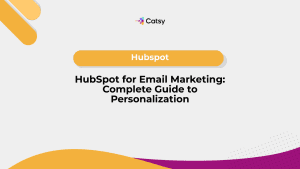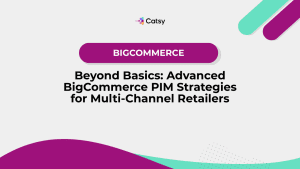Navigating Pricing Management for Complex Shopify Pricing Structures
Pricing Management: Complex Pricing Structures
What You’ll Learn:
- Strategic approaches to complex B2B pricing implementation on Shopify
- Technical solutions for volume discounts and tiered pricing structures
- Contract pricing management that scales with business growth
- Customer-specific rate systems that maintain operational efficiency

Why Advanced Pricing Management Has Become Essential for Charting B2B Success
The evolution of B2B buyer expectations has fundamentally changed how pricing management must be presented and managed online. Today’s procurement professionals expect self-service capabilities, real-time pricing visibility, and streamlined ordering processes that reflect their specific contractual terms and volume commitments.
When you implement sophisticated pricing management systems, you’re enabling your sales teams to focus on relationship building rather than manual quote generation. Automated pricing systems reduce errors, accelerate order processing, and provide consistent customer experiences while maintaining the flexibility needed for complex B2B relationships.
The integration of advanced pricing logic with modern B2B platforms has become crucial for maintaining competitive bearing. Companies that can provide immediate, accurate pricing based on customer-specific terms gain significant advantages in sales cycles, customer satisfaction, and operational efficiency compared to competitors relying on manual pricing processes.
In this Article
Volume Discount Architecture: Setting Your Complex Pricing Structure Coordinates
Tiered Discount Structures: Effective volume discount systems must handle multiple discount tiers based on quantity ranges, product categories, or order values. These systems need to calculate discounts dynamically while providing clear visibility to customers about potential savings from increased order quantities.
Progressive vs. All-Units Pricing: B2B pricing often involves decisions between progressive discount structures (where only quantities above thresholds receive discounted rates) and all-units pricing (where reaching a threshold applies discounts to the entire order). Each approach requires different technical implementation and customer communication strategies.
Category-Specific Volume Rules: Many B2B businesses apply different volume discount structures across product categories, reflecting varying margin structures and competitive dynamics. Implementation must accommodate these variations while maintaining system performance and user experience clarity.
Seasonal and Promotional Integration: Volume discount systems must coordinate with seasonal pricing adjustments, promotional campaigns, and special offers without creating conflicts or calculation errors. This requires robust rule engines that can prioritize and combine different discount types appropriately.
Make Catsy DAM and PIM Software an Extension of Your Team
Book a Free DemoContract Pricing Management: Navigating Agreed Waters
Negotiated Rate Storage and Retrieval: Contract pricing requires secure storage of customer-specific rates with appropriate access controls and audit capabilities. Systems must efficiently retrieve and apply contracted rates while maintaining fallback mechanisms for products not covered by specific agreements.
Contract Term Management: Effective contract pricing systems track contract validity periods, renewal dates, and quantity commitments. This includes automatic notifications for approaching renewals and systems for managing pricing transitions between contract periods.
Approval Workflow Integration: Many contract pricing scenarios require approval workflows for exceptions, special requests, or pricing outside established parameters. These workflows must integrate seamlessly with existing business processes while maintaining order processing efficiency.
Performance Tracking and Analytics: Contract pricing systems should provide visibility into contract utilization, volume commitment tracking, and pricing performance analysis. This data supports contract renewal negotiations and pricing strategy optimization.
Customer-Specific Rate Implementation: Charting Individual Courses
Account-Based Pricing Hierarchies: Customer-specific pricing often involves complex hierarchies where pricing rules cascade from parent accounts to subsidiaries or departments. Implementation must handle these relationships while providing appropriate visibility and control to different user levels within customer organizations.
Integration with Customer Relationship Systems: Customer-specific pricing requires tight integration with CRM and ERP systems to ensure pricing reflects current relationship status, credit terms, and account standing. This integration must maintain real-time accuracy while supporting high-volume order processing.
Geographic and Shipping Considerations: Customer-specific rates often vary based on shipping destinations, delivery methods, or regional cost structures. Pricing systems must incorporate these variables while maintaining transparency and accuracy in customer-facing interfaces.
Exception Handling and Override Capabilities: Even sophisticated automated pricing systems require exception handling capabilities for unique situations. Implementation must balance automation efficiency with flexibility for special circumstances while maintaining appropriate controls and audit trails.
PIM/DAM Solutions for Navigating Complex B2B Pricing
Integrated Product and Pricing Data Management: Product Information Management (PIM) and Digital Asset Management (DAM) platforms provide the foundation for sophisticated B2B pricing by centralizing product data, pricing relationships, and customer-specific information in unified systems. These platforms excel at managing the complex data relationships that B2B pricing requires. One of the top PIM for Shopify solutions is Catsy.
Catsy PIM/DAM as a Comprehensive Navigation Solution: Catsy stands out in the PIM/DAM space for its robust handling of complex B2B scenarios, including multi-tiered pricing structures, customer-specific catalogs, and contract-based pricing management. The platform enables businesses to maintain centralized control over product information while supporting the dynamic pricing requirements that B2B relationships demand.
Advanced Pricing Rule Integration: Modern PIM/DAM solutions like Catsy integrate pricing logic directly with product data management, enabling sophisticated rules that consider product attributes, customer segments, volume thresholds, and contractual terms simultaneously. This integration eliminates the data silos that often complicate B2B pricing implementations.
Scalable Data Architecture: PIM/DAM platforms provide the scalable data architecture needed for growing B2B operations, supporting everything from simple volume discounts to complex multi-dimensional pricing matrices. They handle the data complexity while maintaining the performance and reliability that B2B customers expect from digital ordering platforms.
Top 4 Technical Solutions for Charting Shopify B2B Pricing Waters
- Advanced App Integration Strategy: Shopify’s native pricing capabilities require enhancement through specialized B2B pricing apps and custom integrations. Choose solutions that integrate deeply with Shopify’s checkout process while providing the sophisticated rule engines needed for complex B2B pricing. Consider platforms like Catsy PIM/DAM that can manage complex product data and pricing relationships alongside content management requirements.
- API-First Pricing Architecture: Develop pricing systems that leverage Shopify’s API capabilities to calculate prices dynamically based on customer identity, order characteristics, and contractual terms. This approach enables real-time pricing accuracy while maintaining system performance under high transaction volumes.
- Customer Segmentation and Tagging Systems: Implement robust customer segmentation using Shopify’s tagging and customer group features enhanced by external customer management systems. This foundation enables sophisticated pricing rule application while maintaining administrative efficiency.
- Integrated ERP Connectivity: Establish seamless connections between Shopify and existing ERP systems to ensure pricing consistency across all customer touchpoints. This integration should handle real-time price updates, contract management, and customer account synchronization without disrupting order processing workflows.
Real-World B2B Pricing Implementation Success Stories
Industrial Supply Chain Transformation A complex industrial supplier needed to serve customers with widely varying pricing agreements based on volume commitments, geographic regions, and product categories. Their Shopify implementation created customer-specific pricing portals that automatically apply contracted rates while providing clear volume discount visibility. The system reduced pricing errors and accelerated order processing while maintaining the flexibility needed for complex customer relationships.
Manufacturing Component Distributor Innovation A precision component distributor serving OEM manufacturers implemented dynamic pricing that reflects real-time inventory levels, customer volume commitments, and seasonal demand patterns. Their solution provides immediate pricing feedback to customers while maintaining profitability through intelligent pricing optimization that accounts for multiple business variables.
Chemical Products B2B Platform A specialty chemical company created a sophisticated pricing system that handles hazardous material surcharges, regulatory compliance costs, and customer-specific packaging requirements. The platform automatically calculates total landed costs including all fees and surcharges while maintaining transparent pricing communication with customers.
These implementations demonstrate that sophisticated B2B pricing systems can enhance both customer experience and operational efficiency when designed thoughtfully and implemented properly.
Working with B2B Pricing Implementation Navigators
Implementing complex B2B pricing on Shopify requires expertise that spans e-commerce technology, business process optimization, and integration architecture. The technical complexity of pricing rule engines, combined with the need for seamless integration with existing business systems, often exceeds internal development capabilities.
Professional implementation specialists understand the nuances of B2B pricing requirements and can recommend proven architectural approaches that balance functionality with maintainability. They bring experience in handling edge cases, performance optimization, and the ongoing maintenance requirements that complex pricing systems demand.
When evaluating potential partners, seek specialists with demonstrated experience in B2B e-commerce, complex system integrations, and ongoing support capabilities. The right partner provides not just initial implementation but strategic guidance on charting your pricing strategy as business requirements change and grow.
Key Takeaways
- B2B pricing complexity requires sophisticated technical solutions that extend beyond Shopify’s native capabilities
- Success depends on seamless integration between pricing systems and existing business processes
- Volume discounts, contract pricing, and customer-specific rates each require distinct technical approaches and implementation considerations
- Effective solutions balance automated efficiency with flexibility for complex business relationships
- Professional implementation expertise is often essential for managing technical complexity and ensuring long-term success
Want more tips, tutorials, and insights on product content and e-commerce operations?
Stay connected. We post regularly to help brands like yours scale smarter.
Are You Ready To streamline your product content management?

Frequently Asked Questions
Shopify’s flexibility lies in its extensive API capabilities and app ecosystem that enable sophisticated B2B functionality. Success requires combining Shopify’s core platform with specialized pricing apps, custom integrations, and external systems that handle complex pricing logic. The key is designing architecture that leverages Shopify’s strengths while addressing its B2B limitations through strategic integrations.
Multi-dimensional pricing requires hierarchical rule engines that can process multiple variables simultaneously. Effective approaches typically involve customer segmentation systems combined with product categorization and quantity-based calculations. Implementation often requires external pricing engines that integrate with Shopify through APIs to handle the computational complexity while maintaining user experience simplicity.
Pricing accuracy requires robust data management processes, automated validation systems, and integration with authoritative contract management systems. Key strategies include centralized contract storage, automated price updates, exception reporting for unusual pricing scenarios, and regular audits to ensure system accuracy matches contractual agreements.
Gradual implementation is often the most practical approach, starting with high-impact pricing scenarios and expanding systematically. Begin with volume discounts for key customer segments, then add contract pricing for major accounts, and finally implement comprehensive customer-specific rates. This phased approach allows learning and optimization while minimizing business disruption and implementation risks.
Subscribe For More Content
Sign up for monthly tips on how to drive revenue with product content.




